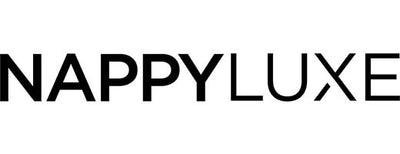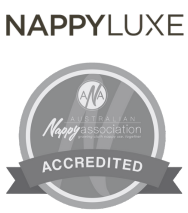How To Successfully Switch To Cloth Nappies
 Making the switch to cloth nappies can seem like a daunting task, but with the right information and guidance, it can be a smooth and rewarding experience for both you and your baby.
Making the switch to cloth nappies can seem like a daunting task, but with the right information and guidance, it can be a smooth and rewarding experience for both you and your baby.
In this comprehensive guide, we'll answer all your questions and provide you with the best tips and tricks to make the transition to cloth nappies a success. From understanding the benefits of cloth nappies to mastering the perfect fit and wash routine, we've got you covered.
Let's dive right in and explore the world of cloth nappies and hear from two mums who have already made the switch.
Video produced by Think Video Production.
Understanding Cloth Nappies: Reusable vs. Disposable
Before we get into the nitty-gritty of making the switch, it's important to understand the differences between reusable (cloth) nappies and disposable nappies.
Modern cloth nappies have come a long way from the old-fashioned, bulky terry cloth versions.
They now come in a range of beautiful prints, slim-fitting designs, and ultra-absorbent materials, making them an attractive and eco-friendly alternative to disposables.
Pros of Cloth Nappies
- Environmentally friendly: Cloth nappies help reduce landfill waste and the use of single-use plastics.
- Cost-effective: Reusable nappies can save you thousands of dollars in the long run, especially if you use them for multiple children.
- Chemical-free: Cloth nappies are made from natural materials and do not contain the chemicals found in disposable nappies.
- Customizable: Cloth nappies come in various styles, absorbency levels, and sizes to suit your baby's needs.
- Faster potty training: anecdotally, many parents find that children using cloth nappies potty train earlier than those using disposables.
Cons of Cloth Nappies
- Initial investment: The upfront cost of a cloth nappy stash can be intimidating. However, long-term savings compared to disposables are significant and buying nappy bundles can save you up to 30% off your stash.
- Extra washing: Cloth nappies require regular washing and drying.
- Bulkier than disposables: Cloth nappies can be slightly bulkier than disposables, but using larger-sized pants and bodysuits can alleviate this.
Now that you understand the basics, let's explore how to successfully switch to cloth nappies.
What Age is Best to Start Cloth Nappies?
You can start using cloth nappies at any age, from newborn to toddler.
Many parents choose to start using cloth nappies from birth, while others may transition when their baby is a few months old or even older.
The key is to find the right type of cloth nappy and fit for your baby's age and size.
There are specially designed newborn cloth nappies for the early weeks, as well as one-size-fits-most options that can be adjusted to grow with your baby.
Some brands, such as NappyLuxe, are well suited to use with your newborn through to toilet training age.
Remember, it's never too late to make the switch and start enjoying the benefits of cloth nappies.
How Hard is it to Use Cloth Nappies?
Using cloth nappies may seem complicated at first, but with a little practice and patience, you'll quickly become a pro.
Modern cloth nappies are designed to be user-friendly and easy to put on and take off.
The key is to establish a new set of habits, and ensure you have a simple and efficient wash routine.
Preparation also helps: have everything you need for the nappy change in easy reaching distance of the changing table, including: cloth nappies, reusable wipes, nappy cream, and a nappy dry pail for the dirties.
Don't be intimidated by the learning curve – once you get the hang of it, using cloth nappies will become second nature.
How do You Get Poo Off Reusable Nappies?
Dealing with poop (or poo) is an inevitable part of using cloth nappies, but it doesn't have to be a messy ordeal. Here are some tips for handling dirty nappies:
- Use liners: Liners can make dealing with poo easier. They are a paper-thin layer that sits in-between the nappy and baby's bottom. They allow liquids to pass through but catch solids: thereby reducing the amount of mess on the nappy itself. Disposable nappy liners can be thrown away, while reusable liners can be rinsed and washed with your nappies. The benefits of disposable liners is that they strike a balance between using reusables but still with a small disposable part for ease, ideal for those who really just don't want to rinse any poo. The downside is that there is still a small single-use part going to landfill.
- Knock solids into the toilet: For older babies eating solid foods, simply knock any solid poo into the toilet before placing the nappy in your dry pail or wet bag. For younger babies with liquid poo, these go straight into the washing machine: this type of poo is water soluble and is spun away in the machine to the sewerage. What's more, by washing at 60 degrees, you ensure bacteria is killed and your washing machine is clean for the next laundry load.
- Use a bidet sprayer or scrape: For messier situations, you can use a handheld bidet sprayer to rinse off the poo in the toilet, or scrape it off with a designated spatula. You can also just rinse the nappy in the laundry sink while wearing gloves, the water goes to the same place as the toilet water (the sewerage), so as long as you're disinfecting the sink afterwards, this is perfectly hygienic to do. You can also replicate a toilet flush in your laundry sink by putting the plug in place, filling a few litres of water, then releasing the plug to ensure any debris in the pipes is washed away.
With these strategies, handling dirty nappies becomes a manageable part of your cloth nappy routine.
How do You Use Cloth Nappies for Newborns?
Using cloth nappies for newborns may require some adjustments to accommodate their small size and frequent nappy changes. Here are some tips for using cloth nappies with newborns:
- Choose newborn-specific or adjustable nappies: Look for cloth nappies specifically designed for newborns or one-size-fits-most nappies that fit well from newborn. Hint: many one-size-fits-most cloth nappies are a larger fit and can't be used for the first few months of baby's life. Choose a brand such as NappyLuxe for nappies that not only fit well from newborn but can be adjusted to fit up to toilet training age.
- Prep your nappies: Make sure to wash and prep your cloth nappies before using them on your newborn, as this will help increase the absorbency of the inserts.
- Change frequently: Newborns typically need more frequent nappy changes than older babies, so be prepared to change their cloth nappy up to 10 times per day. Find out more in our blog: how many nappies a day newborn babies need.
- Monitor for leaks and adjust as needed: Keep an eye out for any leaks or red marks on your newborn's skin, and adjust the fit or absorbency of the nappy as necessary.
With a little patience and practice, using cloth nappies for newborns can be a breeze.
Tips for Successfully Switching to Cloth Nappies
Now that we've covered the basics, let's dive into some practical tips for making a successful switch to cloth nappies.
Start with Cloth Nappies at Home First
Ease into the world of cloth nappies by starting with using them at home. This will allow you to troubleshoot any issues, such as fit or absorbency, in a familiar and comfortable environment. Once you feel confident using cloth nappies at home, you'll be more prepared to tackle outings and overnight use.
Don't Overthink It and Learn as You Go
Switching to cloth nappies doesn't have to be an all-or-nothing decision. Start with just one or two nappies a day and gradually increase your usage as you become more comfortable with the process. Remember that every cloth nappy you use is one less disposable nappy going to landfill, so even part-time use can make a significant impact.
Invest in Quality Cloth Nappies and Accessories
To ensure a successful switch to cloth nappies, invest in high-quality, easy-to-use nappies and accessories. Look for modern cloth nappies with adjustable snaps, made from absorbent and eco-friendly materials. Additionally, consider purchasing reusable wipes, wet bags, and a suitable detergent to make your cloth nappy journey as smooth as possible.
Establish a Simple and Efficient Wash Routine
A well-planned wash routine is essential for maintaining your cloth nappies and keeping them clean and fresh. Aim to pre-wash your nappies daily and do a main wash every 2-4 days, depending on your stash size and baby's needs. Don't be afraid to tweak your wash routine as needed – every family and situation is different, so find what works best for you.
Seek Support and Share Your Experience
Connecting with other cloth nappy users, either online or in-person, can provide you with valuable tips, advice, and encouragement. Share your experiences, ask questions, and learn from others who have successfully made the switch to cloth nappies.
Final Thoughts
Switching to cloth nappies might seem intimidating at first, but with the right knowledge, tools, and mindset, it can be an incredibly rewarding and eco-friendly choice. Remember to take it one step at a time, learn from your experiences, and enjoy the journey towards a more sustainable and cost-effective nappy solution for your baby.
Happy cloth nappying!
Meet the Author
Natalie Lassen

Natalie, Founder of NappyLuxe, is an eco-conscious mother and entrepreneur who discovered the benefits of cloth nappies for her family and the environment. With a mission to create the ultimate cloth nappy, she spent years researching and testing various designs before launching NappyLuxe - a range of high-quality, easy-to-use, and ultra-absorbent cloth nappies. Natalie is passionate about sharing her experience and expertise, helping parents make informed decisions and embark on their own sustainable parenting journey.
Blog posts
How To Use Wool Nappy Covers At Night (Benefits & Wash guide)
Best Cloth Nappies Australia [What Features Do Top Brands Have In Common]
The 5 Top Uses For Cloth Wipes Revealed
Get 10% off your first order
Plus get notified about promotions, new releases and journal updates.





















